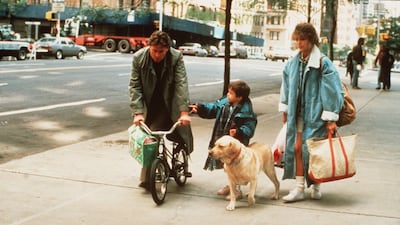One of the longest-running television series in the United States is the late-night comedy sketch show, Saturday Night Live. It has its ups and downs, of course – episodes where the quality is low and the laughs almost non-existent – but then, we all have days like that. For decades, though, the show has delivered some indelible political and cultural humour, and most importantly, it has remained popular with young audiences.
That last point is really key to maintaining a profitable enterprise in the American entertainment industry.
Recently, the show lampooned a very high-level aide to Donald Trump by placing her in a parody version of the 1987 thriller Fatal Attraction. What was remarkable about the sketch wasn’t its humour – though this was one of the times that Saturday Night Live hit a high-quality note – but that the subject of the sketch was a 30-year-old picture.
The target audience of Saturday Night Live was barely out of the cradle when Fatal Attraction was in the cinemas. The film was rated “R” when it was released, which means that no one under the age of 17 is allowed to see it, meaning that if you were born after 1970 – in other words, if you’re younger than 47 – you probably never saw the film in a cinema.
And yet: young television audiences hooted and roared at the 2017 parody version on Saturday Night Live.
Somehow a psychological thriller from the late 1980s etched itself into American popular culture deeply enough to become an iconic and reliable touchstone.
But like a lot of Hollywood stories, this one almost ended up unhappily. The first version of the picture – the version the director, Adrian Lyne, was most satisfied with – included an ending that was radically different from the ending movie- goers eventually saw.
The chief benefit of talking about a 30-year-old movie is that I really can’t be expected to issue “spoiler alerts” – even if you haven’t seen Fatal Attraction, you almost surely know the basic plot points. After all, a generation of young people knew it closely enough to laugh at a recent parody. But in case you’re lost or, more irritatingly, not even 30 years old, the following paragraph should fill you in.
The movie tells the story of a brief romantic encounter gone horribly wrong. A husband, left alone for a weekend by his wife and children, meets a woman, played by Glenn Close, who subsequently becomes obsessed with him. (Well, it’s a little juicier than that, but let’s keep this upscale, OK?) As her obsession grows and becomes more violent and unwieldy, the husband – played by Michael Douglas – increasingly fears for his wife and family’s safety. It all ends up with the wife, played by Anne Archer, shooting Glenn Close’s character in the family bathroom.
That’s how it ended up, in any case, in its final version. The original ending included a violent suicide, a murder frame-up and (in one version) an unresolved mystery. But each version was screened in front of test audiences and each time audiences responded unfavourably to the endings. They were unsatisfied by the suicide, they didn’t like the frame-up angle, they felt cheated by the final moments of the movie. The story goes that the director and screenwriter argued long and hard about the ending – despite the audience’s reaction, they insisted that their original version was smarter, better and more artistically valid.
What the creative players on the project wanted was a smart and stylish thriller. What the studio wanted was a giant hit. These two things are not often the same thing.
A new ending was shot – this is the one we old-timers saw in the cinema; this is the one that the younger people saw later on Netflix or DVD – and when test audiences screened the new version, they cheered and applauded. (You can actually see the original ending if you’re interested – like everything else, it’s on YouTube.) The new ending was cut into the film, the film was released into cinemas, the money rolled in.
It’s impossible to say whether the previous versions of the ending would have prevented Fatal Attraction from becoming the cultural artefact it is today. But it seems unlikely. For a movie to embed itself so deeply into the collective consciousness, it needs to be a major – and audience-satisfying – hit.
It’s often said that Hollywood prefers happy endings, and that’s mostly true. But in the case of Fatal Attraction, it really wasn’t a question of a happy or sad ending – no matter which ending they used, someone was going to die.
The first rule of storytelling is, there are no happy or sad endings. There are only endings that satisfy the audience and endings that don’t.
And if you want crowds to throng the cinema and for your picture to remain vivid enough that a television comedy skit about it will feel relevant 30 years into the future, reshoot the ending as many times as necessary.
Rob Long is a writer and producer in Los Angeles
On Twitter: @rcbl

